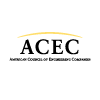Sustainability and Renewables in the Post-COVID World
With the Biden Administration promoting policies to create a carbon-free energy sector by 2035 and net-zero emissions economy-wide by 2050,
the ACEC Research Institute recently gathered four experts on energy to discuss how to achieve those goals.
The Sustainability and Renewables in a Post-Pandemic World panelist — Roger Frechette III, PE, Managing Principal, Interface Engineering; Lisa C. Moerner, Director Innovation & Sustainability Technology, Dominion Energy Services, Inc.; Andy Solberg, Global Technology Leader, Jacobs; and Tommy Wells, Director, Washington D.C. Department of Energy and Environment — examined the potential impact of renewables and sustainability on energy policies going forward.
Here are four conclusions from the panel discussion:
The A/E Industry Can Achieve Net-Zero. Firms are already designing net-zero buildings, and there are hundreds of them already built across the country. An organization called the New Buildings Institute (newbuildings.org) tracks these buildings, showing listing both those that have been designed, built, and verified as operating at net zero and projects under construction that anticipate achieving net-zero.
Energy Providers’ Going Green Will Help to Make Net Zero Achievable. At least one energy provider, Dominion Energy Services, is “greening” their electricity intending to be carbon neutral by 2050. To do this, the company is moving towards renewables in many areas, such as offshore wind turbines and solar projects. The long-term result is that the energy it provides will already be “green,” helping building designers to meet their net-zero targets more easily.
Government Should Partner with Industry and Incentivize Net-Zero. The Washington, D.C. government is an excellent example of how the public sector can help the industry achieve net-zero. For instance, D.C. provides between $25 and $30 million per year to a sustainable energy utility to retrofit existing buildings. It has also created a “green bank” to finance projects that may not support traditional lenders. Organizations like the American Geophysical Union have utilized this bank to fund technology that harvests geothermal energy from sewer pipes that run through its building.
Nuclear Energy Is Part of the Solution. Although there are mixed feelings in the sustainable energy community about nuclear power, the panelists agreed that it is an inevitable part of the net-zero solution. Nuclear energy is carbon-free and will help bridge the energy gap to a future of other renewables. Given current power demand and some of the limitations of renewables in the near-term, nuclear power will be needed as a bridge.
Firms, Energy Providers, and Governments Must Staff-up for a NetZero Future. The panelists agreed that as the world moves toward a more sustainable and renewable energy landscape, there will be a growing need for graduates with skills in this area. Not only will engineering and related design firms need staff with the technological know-how, but governments will require people with the technical understanding to pave the way for renewable and sustainable policies.
Click here to view the roundtable discussion.
